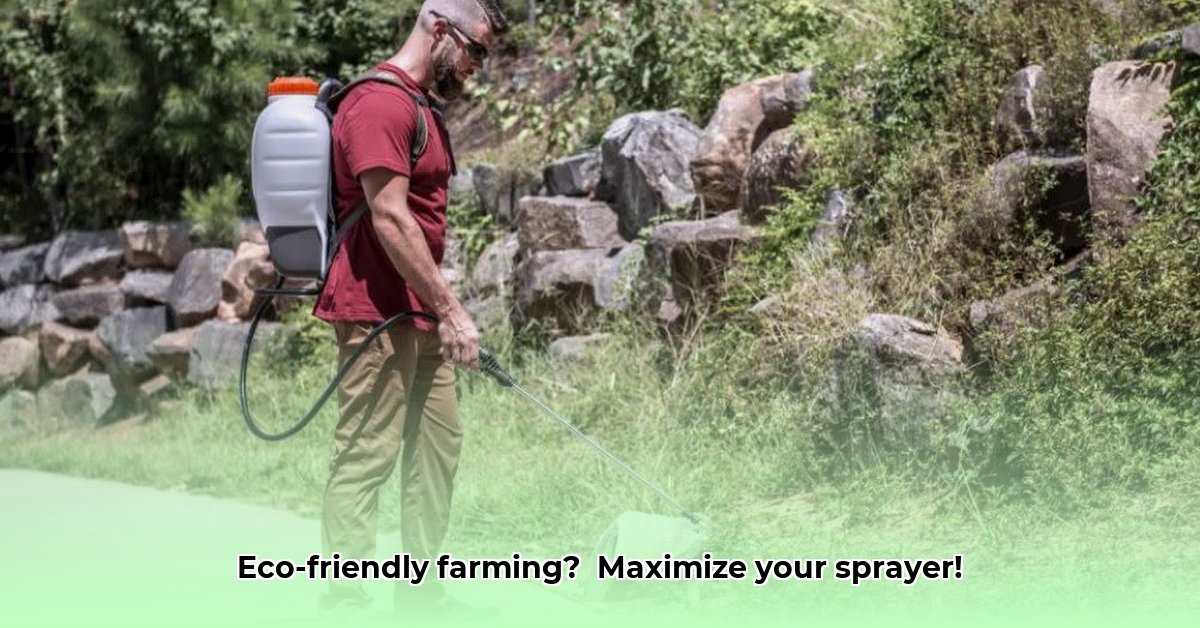
Backpack sprayers are essential tools for efficient and sustainable farming. This guide helps you select the right sprayer from Tractor Supply, master its use, and prioritize safety for optimal results. For more sprayer options, check out Tractor Supply's sprayer tanks.
Choosing the Right Backpack Sprayer at Tractor Supply
Selecting the perfect backpack sprayer depends on your specific farming needs. Consider these factors:
Tank Size: Smaller tanks (4 gallons are common) are lighter and easier to handle, but require more frequent refills. Larger tanks (6 gallons or more) offer longer operation but increase weight and may strain your back. Consider the size of your fields and the amount of spraying you'll be doing.
Pump Type: Diaphragm pumps are durable and reliable, ideal for most farmers. Piston pumps offer higher pressure for larger areas or thicker solutions but may be heavier and noisier.
Nozzle Type: Nozzle selection is crucial. Adjustable nozzles are best, allowing you to switch between fan-shaped sprays for broad coverage and cone-shaped sprays for precise application. The right nozzle minimizes drift and ensures even distribution, reducing waste and protecting the environment.
Material: Most sprayers are made of polyethylene, which is lightweight and relatively inexpensive. Some high-end models utilize more robust and chemical-resistant materials. Consider the chemicals you'll be using to determine appropriate material choices.
Comfort Features: Look for padded straps and an adjustable harness for maximum comfort, especially during extended use. Back and shoulder pain are common issues when using poorly designed sprayers. Prioritizing comfort increases efficiency and reduces fatigue.
Did you know that using the wrong nozzle can lead to up to 30% more pesticide waste due to drift? Choosing a high-quality sprayer with adjustable nozzles can significantly reduce this waste.
Here's a comparison of common models available at Tractor Supply. Note that availability and pricing may vary:
| Model | Tank Size (Gallons) | Pump Type | Nozzle Type Options | Approximate Price Range | Key Advantages | Considerations |
|---|---|---|---|---|---|---|
| Field King X | 4, 6 | Diaphragm | Adjustable Fan, Cone | $50 - $80 | Durable, reliable, budget-friendly | Fewer nozzle options |
| Solo 425 | 4 | Piston | Adjustable Cone, Fan | $70 - $100 | High pressure, suitable for larger areas | Heavier, potentially louder |
| Chapin 61500 | 4 | Diaphragm | Multiple | $60 - $90 | Versatile nozzle options, often comfortable design | May require slightly more frequent maintenance |
Mastering Your Backpack Sprayer: A Step-by-Step Guide
Preparation:
- Read the Pesticide Label Carefully: Always follow the manufacturer's instructions precisely. This ensures safe and effective application and protects both you and the environment.
- Safety Gear is Essential: Wear appropriate personal protective equipment (PPE) including gloves, goggles, and a respirator, regardless of the pesticide used.
- Mix Correctly: Fill the tank with water before adding the pesticide. Follow mixing instructions on the pesticide label meticulously to prevent spills and ensure proper concentration.
- Prime the Pump: Pump the sprayer to build pressure according to the manufacturer's instructions.
Application:
- Even Coverage: Maintain a steady pace, overlapping spray patterns to ensure complete coverage. Avoid gaps or overspraying.
- Weather Conditions: Spray on calm days with minimal wind to minimize drift. Wind can drastically reduce effectiveness and cause contamination.
- Adjust Nozzle According to the Situation: Use a fan nozzle for broad coverage and a cone nozzle for more precise application. Adjust pressure as needed to optimize spray pattern.
Maintenance and Cleaning:
- Rinse Thoroughly: Immediately rinse the tank and pump with clean water after each use to prevent residue build-up and corrosion.
- Proper Storage: Store your sprayer in a clean, dry place, away from children and pets.
- Regular Inspection: Periodically inspect for leaks, damage, or wear and tear.
"Proper maintenance not only extends the lifespan of your sprayer, but also improves its effectiveness and reduces the chances of clogging or malfunction," says Dr. Emily Carter, Agricultural Engineer at the University of California, Davis.
Safety Precautions: Prioritize Your Well-Being
- Personal Protective Equipment (PPE): Always wear appropriate PPE during handling and application.
- Targeted Spraying: Never spray toward people, animals, or unintended areas.
- Safe Pesticide Storage: Follow label instructions for proper storage and disposal of pesticides.
- Seek Medical Attention: Consult a physician immediately if you experience any adverse reactions after pesticide exposure.
Conclusion: Sustainable Farming with Backpack Sprayers
By selecting the right backpack sprayer from Tractor Supply and following safe application and maintenance practices, you can significantly improve your farm's efficiency and sustainability. Remember that regular maintenance, proper application techniques, and attention to safety are crucial for effective and responsible pesticide use. Always refer to the product's manual and the pesticide label for specific instructions and safety precautions. Visit Tractor Supply's website for the latest product information.